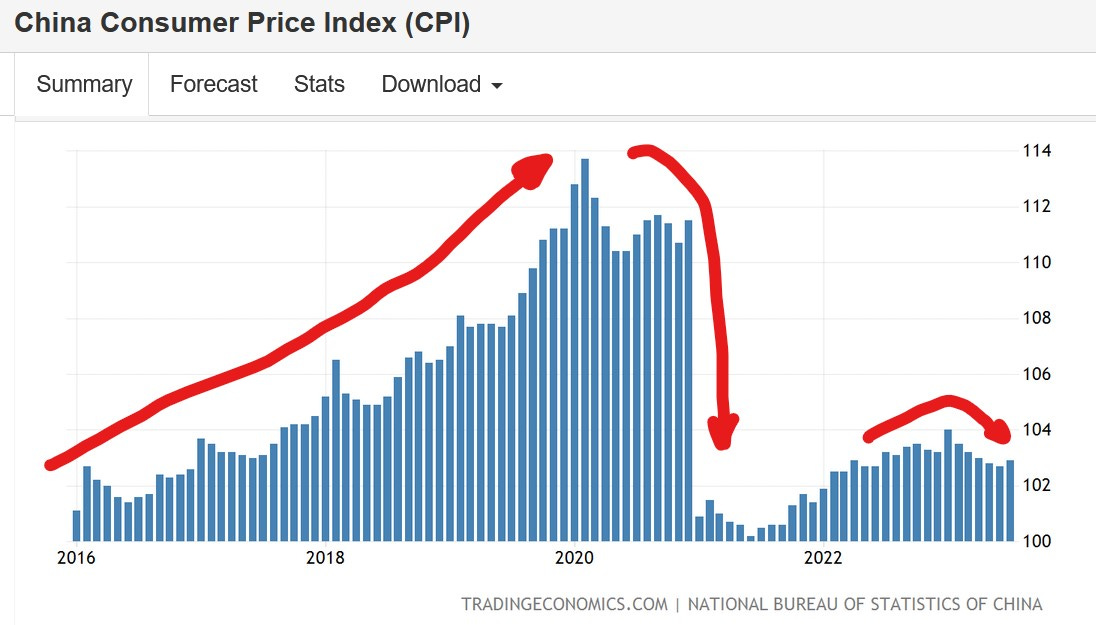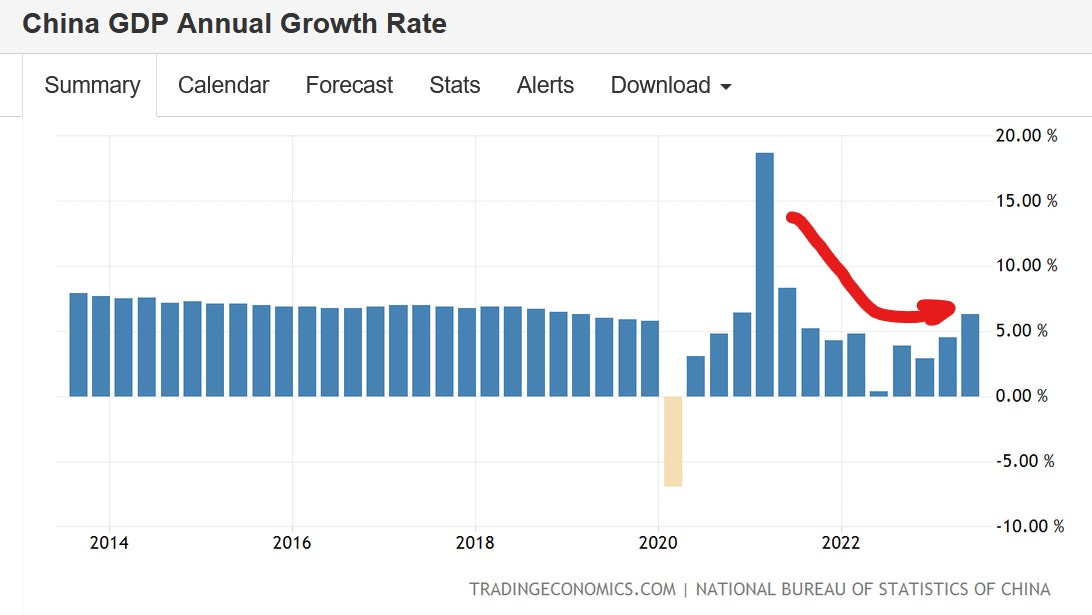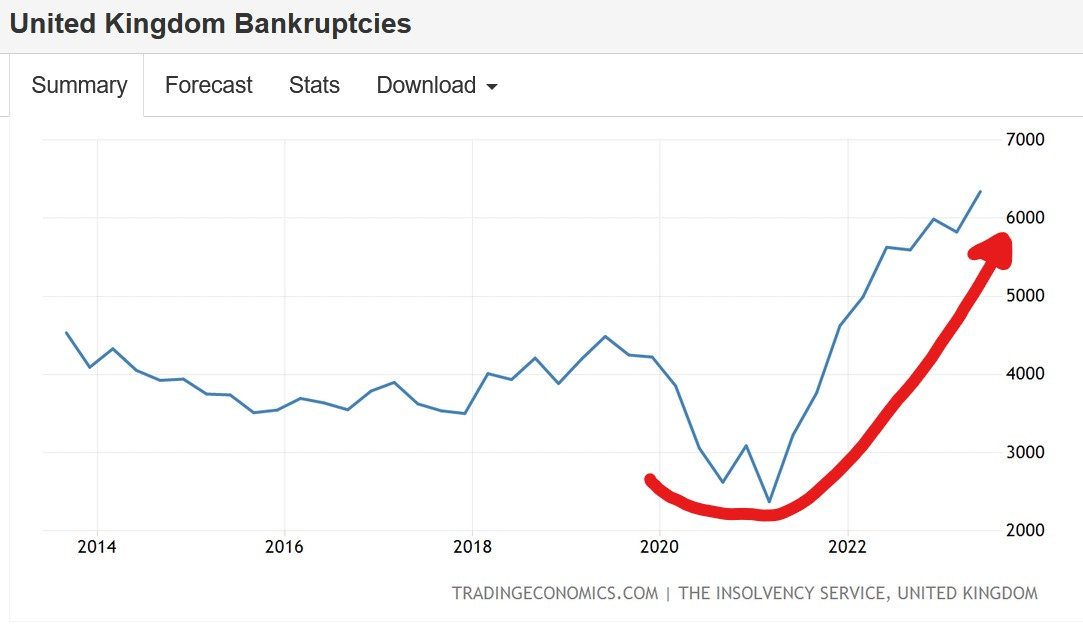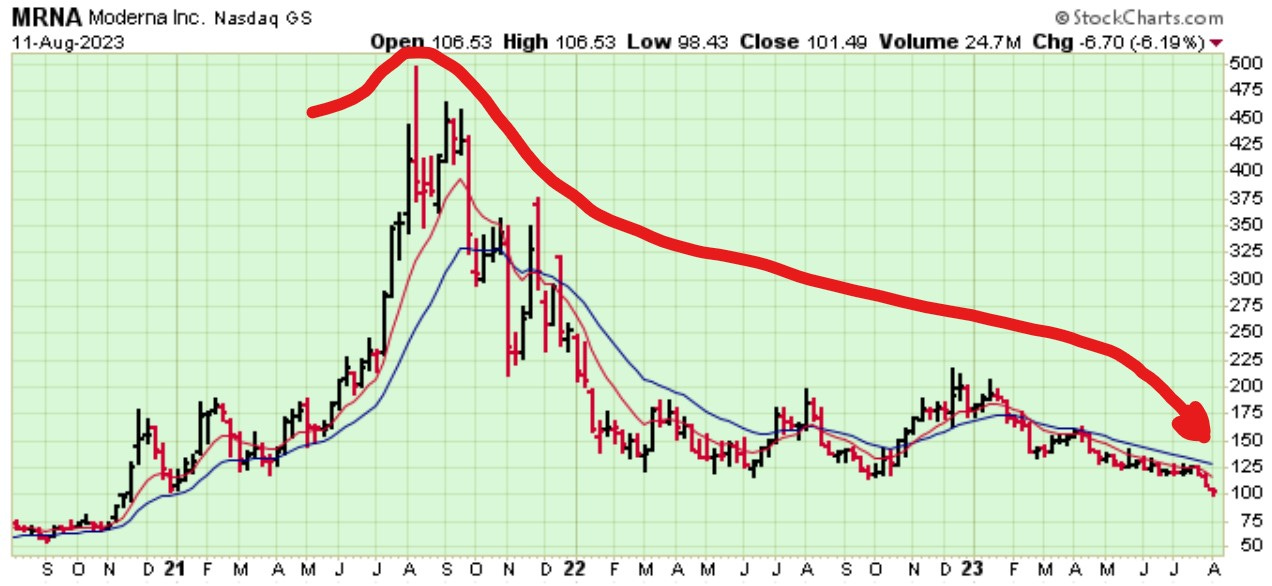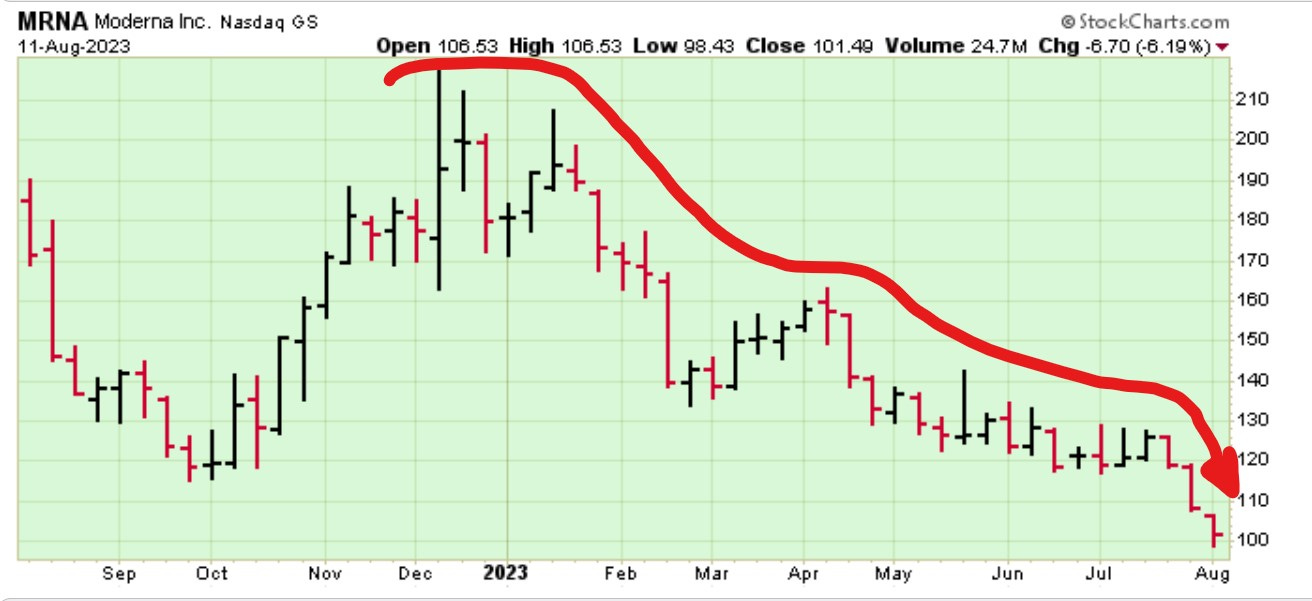BOOM Finance and Economics 13th August 2023
WEEKLY REVIEW -- Sunday -- All previous Editorials are available at LinkedIn and at https://boomfinanceandeconomics.wordpress.com/
CPI DEFLATION IN CHINA – ECONOMIC NIRVANA BECKONS?
CPI numbers in China have been trending down for the last 10 months. Last week, the numbers were released for July and went negative – 0.3 % Year on Year. By definition, negative rates of inflation are deflation. It is important to note that China’s Producer Prices (YoY) have also been in deflation for 10 months, since October 2022.
China’s current Annual GDP Growth, however, registered in July, is positive at 6.3 %.
So the next question is this. Can China maintain positive GDP Growth while experiencing negative CPI inflation (deflation)?
If so, then they will demonstrate once and for all that their centralised control of the money supply via disciplined government control of their financial sector is effective at delivering non inflationary growth. That will be an extraordinary achievement and arguably revolutionary in an economic sense.
ECONOMIC NIRVANA?
The next 6 – 12 months (and more) will be very interesting to watch. We may see the emergence of a completely new economic paradigm with the Western advanced economies in persistent Stagflation -- (CPI inflation combined with flat or negative growth in GDP) -- while the Chinese economy could continue to grow as their consumer prices fall.
If this can be achieved, the China model of sophisticated, centralised command and control of their volumes of physical cash in circulation and of their financial system (effectively a system of semi-private banks that provide credit money upon command) combined with an free-wheeling, entrepreneurial real economy will be fully confirmed as superior to the Western model.
The Western financial system model for money origination, by contrast, is almost totally reliant on the continued emergence of willing private borrowers coming forward to private banks and demanding bank loans. In the West, there is really no centralised command and control over money origination other than the use of interest rate settings by national central banks. Thus, the Western economies are effectively hostage to borrower demand. (By the way, for the record, BOOM does not agree that the Basel Ratios apply any real restrictions on bank loan expansion).
If the Chinese can deliver this economic nirvana in the longer term while western economies stagnate, then the Western advanced economies will (arguably) have no choice but to abandon their 400 year old, private banker dominated financial model. The end of capitalism? The end of private banks? Not quite — private banking itself is not the problem. It has huge advantages of speed, innovation and diversification of money supply. Overwhelming private banker dominance of the money supply is the problem.
So — how can we rescue the West if Stagflation becomes embedded?
In the West, there is a decline in the population of willing borrowers due to their declining working age populations. To ensure a return to economic growth and controlled CPI inflation, Western governments will have to quickly issue increased volumes of non interest bearing, physical cash into their economies and encourage people to use it as much as possible. In other words, western governments will have to take back the control of their money supply which they have effectively surrendered to the private bankers over the last 400 years and especially over the last 50 years.
Non-inflationary economic growth is seen as an impossible dream in the West where private banks and their borrowers rely on CPI inflation and asset price inflation to keep them solvent. That impossible dream is not a Bridge Too Far if the importance of physical cash volumes is recognised. Physical cash is a non interest bearing, natural buffer to credit money (created as bank loans).
THE GREATEST ECONOMIC EXPERIMENT EVER
For over 400 years, since the early days of private banking in medieval Venice, economic expansion has been driven by private banker dominance of the money supply. Prior to the emergence of private banking and the use of their double entry ledgers, economies were feudalistic, dependent upon a wealthy Monarchy or Aristocracy to spend its money, sometimes borrowed, sometimes not, in the form of physical cash into the economy via lavish spending projects. Private banking changed all that and allowed private borrowers access to bank loans. That unleashed the spirit of entrepreneurial endeavour. And what followed was the emergence of prosperity built upon an ever expanding supply of bank loans (credit money).
Such a system works well when there is an increasing demand for bank loans over time from increased numbers of borrowers. It works even better when there is a banking regulator present to ensure that banks do not become too profligate in extending credit.
However, if the borrowers become either reluctant or shrink in number from disease, demographics or warfare and the Government does not increase physical cash in circulation, then the economy becomes starved of fresh newly originated money. The result is economic stagnation.
YELLOW TRUCKS FILE FOR US BANKRUPTCY PROTECTION
In last week’s editorial, BOOM covered the US trucking industry and concluded -- “trucking declines of this degree suggest a significant decline in consumer demand.”
Since then, one of the biggest bankruptcies in US trucking history has occurred. The nation's third-largest less-than-truckload carrier, Yellow Corp., filed for Chapter 11 protection in a Delaware court. The company listed more than 100,000 creditors. Yellow Corp had been in business for nearly 100 years. The Nashville-based company had 30,000 employees.
Yellow Corp shares traded on Nasdaq last December 2022 at above $ 15. They have been falling ever since and reached a recent low of 0.50 cents two weeks ago.
On present trend, corporate bankruptcies in the US are currently heading towards their highest point since 2010. The total to date in 2023 already exceeds the 12 month total for 2022. Monthly Bankruptcy numbers have been rising each month since July 2022. Bankruptcies in the United States increased to 15,724 companies in the second quarter of 2023.
However, please bear in mind that current numbers are relatively low in comparison to what happened in 2010 when quarterly bankruptcies reached 60,000 and in 1987 when they reached 80,000.
UK BUSINESS BANKRUPTCIES -- WILCO FILES FOR BANKRUPTCY ADMINISTRATION
Meanwhile, in the UK, a British household goods discount retailer, Wilko, announced its bankruptcy and application for administration. The company has 400 stores and 12,500 jobs are now at risk. It is family owned and began operations 93 years ago with a single store. The company had an annual revenue of approximately US $ 1.5 Billion. Administrators are seeking a buyer for the business.
Bankruptcies in the United Kingdom in the second quarter of 2023 increased to 6,342 Companies. In recent history, since 1975, quarterly bankruptcies have only exceeded 6,000 twice before – in 1992 and in 2008. The previous peaks were associated with economic recessions that occurred in 1991 and in 2008.
This chart illustrates the rapid appearance of economic stress over the last 2 years. Boris Johnston became Prime Minister in July 2019 and was thankfully removed from office in September 2022.
UK Corporate Bankruptcies Chart – 10 years – sudden increase began early 2021.
AUSTRALIAN SENATE INQUIRY INTO COVID VACCINES VERY REVEALING
Readers may not be aware of the Inquiry last week in the Australian Senate Employment Legislation Committee regarding the Fair Work Amendment (Prohibiting COVID-19 Vaccine Discrimination) Bill 2023.
Senators were able to direct questions on Covid Vaccines to executives representing Pfizer and Moderna. There were several startling revelations in this hearing, including the following:
Pfizer and Moderna appeared to be unable or unwilling to explain why or how the mRNA (synthetic, man-made messenger RNA) mechanism in the vaccines could cause Myocarditis or Pericarditis.
Pfizer staff in Australia were given specially imported batches of the vaccines that were not subject to approval from the regulator, the Therapeutics Goods Administration.
Pfizer and Moderna appeared to be (presumably) unaware of the extent of adverse impacts from their products.
Pfizer staff claimed that they did not believe that Australians were compelled to take the vaccines, despite widespread evidence suggesting otherwise.
Pfizer and Moderna refused to disclose details of the confidential commercial contracts with the Australian government to roll out the vaccines, including legal immunity.
The Big Pharma executives on show appeared surprised and largely unaware of the growing literature documenting serious reactions and consequences from these products. They simply replied by reading answers that appeared to be written by their legal advisers.
Moderna shares ended the week down 6.2 % on the Nasdaq exchange. The shares have declined by 42 % over the last 6 months. Moderna is fully exposed to the success or failure of man-made, synthetic mRNA technology as it has no other products on the market.
Pfizer shares fared better last week, rising by 2.9%. They have products on the market that are not reliant on mRNA technology. However, their shares have declined by 18 % over the last 6 months and are down 40% since late 2021.
Moderna Shares -- MRNA OVER 3 YEARS
Moderna Shares -- MRNA OVER 1 YEAR
AUSTRALIAN CLASS ACTION ON COVID VACCINE INJURIES
A Class Action has been launched in Australia on behalf of a large number of people injured by Covid Vaccines. Dr Melissa McCann summarises the case in this video. Readers are advised to watch closely. A defeat for Big Pharma in any Class Action anywhere would be a sensational development, indeed. It would lead to similar actions in the USA where the numbers of injured would be 10 times greater than in Australia.
Reference: https://rumble.com/v348nkr-covid-vaccine-injury-class-action.html
US HOME PRICES KEEP RISING – BOOM RIGHT AGAIN
On 16th April, BOOM wrote -- “This suggests that US house prices may soon begin to rise in price”.
At the time, nobody else was making such statements. Some BOOM readers actually doubted BOOM’s sanity. However, time has again proven BOOM’s vision correct.
The median US home-sale price is now up 3.2% year over year, the biggest increase since November. And this increase has occurred as mortgage interest costs have surged.
Redfin Corporation is a Seattle-based operator of a residential real estate brokerage. The company operates in more than 100 markets in the United States and Canada. A recent Redfin report stated “Home prices are increasing because of the mismatch between supply and demand. High mortgage rates have pushed many would-be sellers out of the market, with homeowners hanging onto their relatively low rates. The total number of homes for sale is down 19%, the biggest drop in a year and a half, and new listings are down 21%.”
Redfin also stated “1 in 10 homes in America are worth over $ 1 Million. This is close to an all time high.”
In economics, things work until they don’t. Until next week, make your own conclusions, do your own research. BOOM does not offer investment advice.
BOOM — ALL PREVIOUS EDITORIALS AVAILABLE AT —
https://boomfinanceandeconomics.wordpress.com/
Disclaimer: All content is presented for educational and/or entertainment purposes only. Under no circumstances should it be mistaken for professional investment advice, nor is it at all intended to be taken as such. The commentary and other contents simply reflect the opinion of the authors alone on the current and future status of the markets and various economies. It is subject to error and change without notice. The presence of a link to a website does not indicate approval or endorsement of that web site or any services, products, or opinions that may be offered by them.
Neither the information nor any opinion expressed constitutes a solicitation to buy or sell any securities nor investments. Do NOT ever purchase any security or investment without doing your own and sufficient research. Neither BOOM Finance and Economics.com nor any of its principals or contributors are under any obligation to update or keep current the information contained herein. The principals and related parties may at times have positions in the securities or investments referred to and may make purchases or sales of these securities and investments while this site is live. The analysis contained is based on both technical and fundamental research.
Although the information contained is derived from sources which are believed to be reliable, they cannot be guaranteed.
Disclosure: We accept no advertising or compensation, and have no material connection to any products, brands, topics or companies mentioned anywhere on the site.
Fair Use Notice: This site contains copyrighted material the use of which has not always been specifically authorized by the copyright owner. We are making such material available in our efforts to advance understanding of issues of economic and social significance. We believe this constitutes a ‘fair use’ of any such copyrighted material as provided for in section 107 of the US Copyright Law. In accordance with Title 17 U.S.C. Section 107, the material on this site is distributed without profit. If you wish to use copyrighted material from this site for purposes of your own that go beyond ‘fair use’, you must obtain permission from the copyright owner.
Subscribe to BOOM Finance and Economics Substack
By Dr Gerry
Over 5 years on a number of platforms, BOOM has developed a loyal readership which includes many of the world’s most senior economists, central bankers, fund managers and academics.





